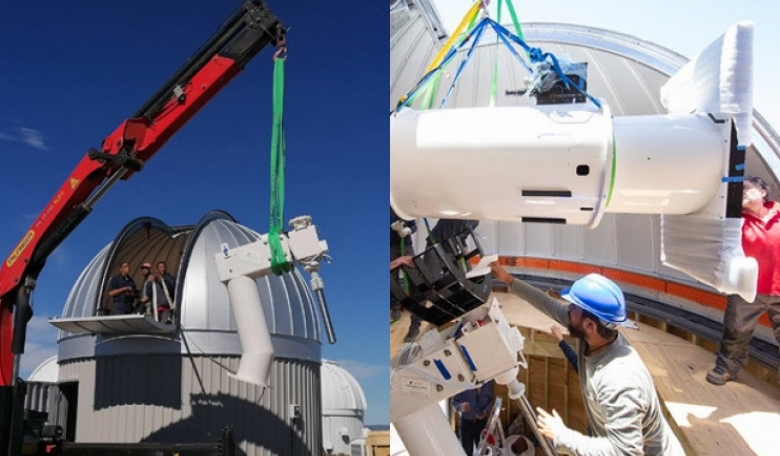The NASA-funded Asteroid Terrestrial-impact Last Alert System (ATLAS) - a state-of-the-art asteroid detection system operated by the University of Hawaiʻi (UH) Institute for Astronomy (IfA) for the agency’s Planetary Defense Coordination Office (PDCO) - has reached a new milestone by becoming the first survey capable of searching the entire dark sky every 24 hours for near-Earth objects (NEOs) that could pose a future impact hazard to Earth.
Now involving four telescopes, ATLAS has expanded its reach to the southern hemisphere from the two existing northern-hemisphere telescopes on Haleakalā and Maunaloa in Hawai’i to include two additional observatories in South Africa and Chile.
“An important part of planetary defence is finding asteroids before they find us, so if necessary, we can get them before they get us” said Kelly Fast, Near-Earth Object Observations Program Manager for NASA’s Planetary Defense Coordination Office.
“With the addition of these two telescopes, ATLAS is now capable of searching the entire dark sky every 24 hours, making it an important asset for NASA’s continuous effort to find, track, and monitor NEOs.”
UH IfA developed the first two ATLAS telescopes in Hawaiʻi under a 2013 grant from NASA’s Near-Earth Objects Observations Program, now part of NASA’s PDCO, and the two facilities on Haleakalā and Maunaloa, respectively, became fully operational in 2017.
After several years of successful operation in Hawaiʻi, IfA competed for additional NASA funds to build two more telescopes in the southern hemisphere. IfA sought partners to host these telescopes, and selected the South African Astronomical Observatory (SAAO) in South Africa (pictured during construction) and a multi-institutional collaboration in Chile. The ATLAS presence augments already substantial astronomical capability in both countries.
Each of the four ATLAS telescopes can image a swath of sky 100 times larger than the full Moon in a single exposure. The completion of the two final telescopes, which are located at Sutherland Observing Station in South Africa and El Sauce Observatory in Chile, enable ATLAS to observe the night sky when it is daytime in Hawai‘i.
To date, the ATLAS system has discovered more than 700 near-Earth asteroids and 66 comets, along with detection of 2019 MO and 2018 LA, two very small asteroids that actually impacted Earth.
The system is specially designed to detect objects that approach very close to Earth - closer than the distance to the Moon, about 240,000 miles away. On 22 January, ATLAS-Sutherland in South Africa discovered its first NEO, 2022 BK, a 100 m asteroid that poses no threat to Earth.
The addition of the new observatories to the ATLAS system comes at a time when the agency’s Planetary Defense efforts are on the rise. NASA’s Double Asteroid Redirection Test (DART) - the world’s first full-scale mission to test a technology for defending Earth against potential asteroid impacts - launched last November will deflect a known asteroid, which is not a threat to Earth, to slightly change the asteroid’s motion in a way that can be accurately measured using ground-based telescopes.
Additionally, work on the agency’s Near-Earth Object Surveyor space telescope (NEO Surveyor) is underway after receiving authorization to move forward into Preliminary Design, known as Key Decision Point- B. Once complete, the infrared space telescope will expedite the agency’s ability to discover and characterise most of the potentially hazardous NEOs, including those that may approach Earth from the daytime sky.











